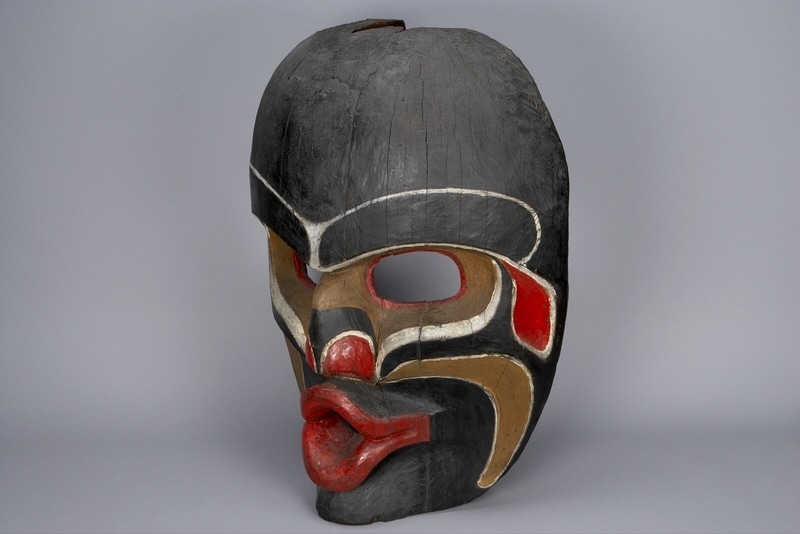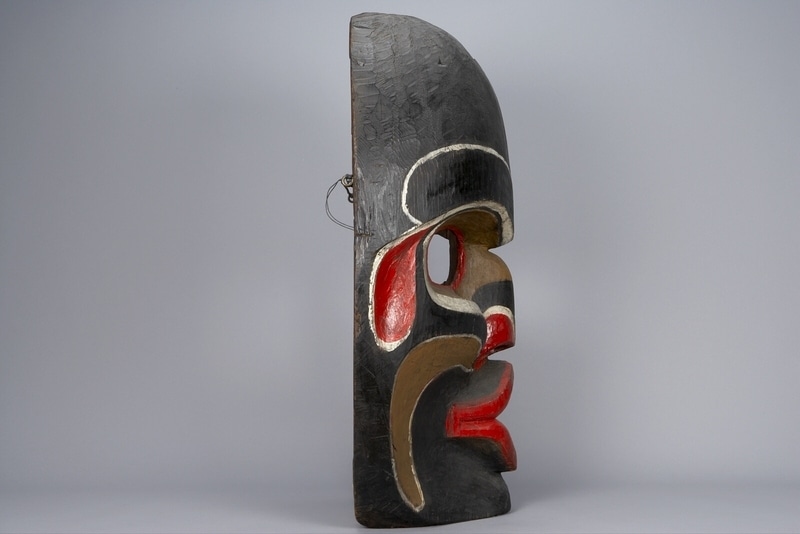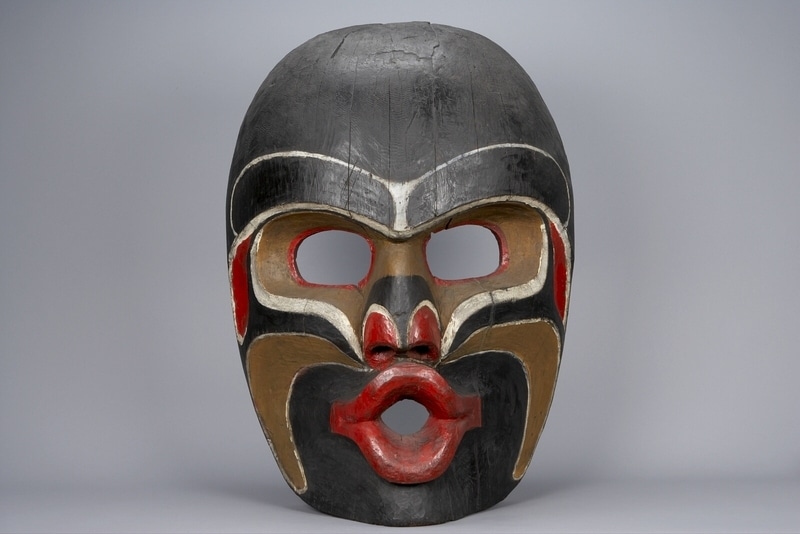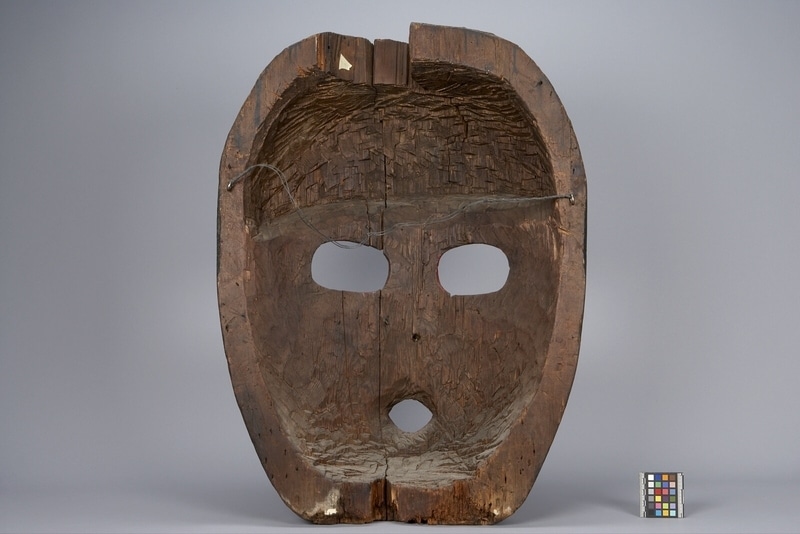Feast Dish Lid Item Number: A2522 from the MOA: University of British Columbia




Description
Dzunuk'wa (or Tsonoqua) figure with pursed lips and heavy eyebrows. The feast dish lid is painted black with white outlining the eyebrows, brown around the red-rimmed eye holes, white bordering the eye sockets, red nostrils bordered around the top with white, brown bordered with white under the cheeks and down the sides of the jaw, red at the temples, and red on the lips.
History Of Use
Used as a feast dish lid. The carvings used were usually mythical beings associated with the history of the family who had the right to use representations of them as family crests. Dramatic displays of rank and privilege have traditionally been part of the oratory, dancing, regalia, and feasting that accompany the Kwakwaka’wakw potlatch. Immense feast dishes representing Dzunuk̓wa, or Wild Woman, were used at events where the host would challenge his rivals to promise future feasts. The placement of the dish, and the manner in which chiefs were served from its various parts, would reflect the rank of each tribe and sometimes fuel rivalries among them.
Cultural Context
ceremony; status
Iconographic Meaning
Dzunuk'wa (Tsonoqua) is usually recognized by her blackened face, sunken eyes and cheeks, and pursed lips. Dzunuk'wa was a female giantess who inhabited the distant forest and mountains. She had a distinctive cry 'hu, hu' and was particularly threatening to children. She could also be benevolent in some aspects. Used as a crest she was associated with wealth and power.
Narrative
This Dzunuk'wa dish lid appears to be the one shown in a historical photo (taken c. 1926) of fourteen men at Kingcome Village posing with a large Dzunuk'wa dish and two other lids, one of which is MOA #A4342. If it is this lid, it is now missing its eyes and was repainted. Individuals in the photo have been identified by Adam Dick, Mike Willie, and William Wasden, Jr. The men were identified as: Bill Wilson, Sam Webber, Chief Iwakalas (Jim Humchitt or “Adatana”), Tommy King, Alec Willie, Mr. Williams, Head Chief Kodalagalis (Dick Webber), Harry Jack, Alfred Coon, William Webber, William Dawson, Jim King, Albert Dawson, and Shorty James. Wasden said that Chief Iwakalas was probably the owner of the dish, and therefore of the lid that fit it.
Item History
- Made in British Columbia, Canada before 1926
- Collected in Kingcome Inlet, British Columbia, Canada and Ukwanalis, British Columbia, Canada
- Owned by Walter C. Koerner before April 8, 1976
- Received from Walter C. Koerner (Donor) on April 8, 1976
What
- Name
- Feast Dish Lid
- Identification Number
- A2522
- Type of Item
- lid
- Material
- red cedar wood and paint
- Manufacturing Technique
- carved and painted
- Overall
- height 92.0 cm, width 64.0 cm, depth 28.0 cm
Who
- Culture
- Kwakwaka'wakw
- Previous Owner
- Walter C. Koerner
- Received from
- Walter C. Koerner (Donor)
Where
- Holding Institution
- MOA: University of British Columbia
- Made in
- British Columbia, Canada
- Collected in
- Kingcome Inlet, British Columbia, Canada and Ukwanalis, British Columbia, Canada
When
- Creation Date
- before 1926
- Ownership Date
- before April 8, 1976
- Acquisition Date
- on April 8, 1976
Other
- Condition
- fair
- Accession Number
- 0336/0001